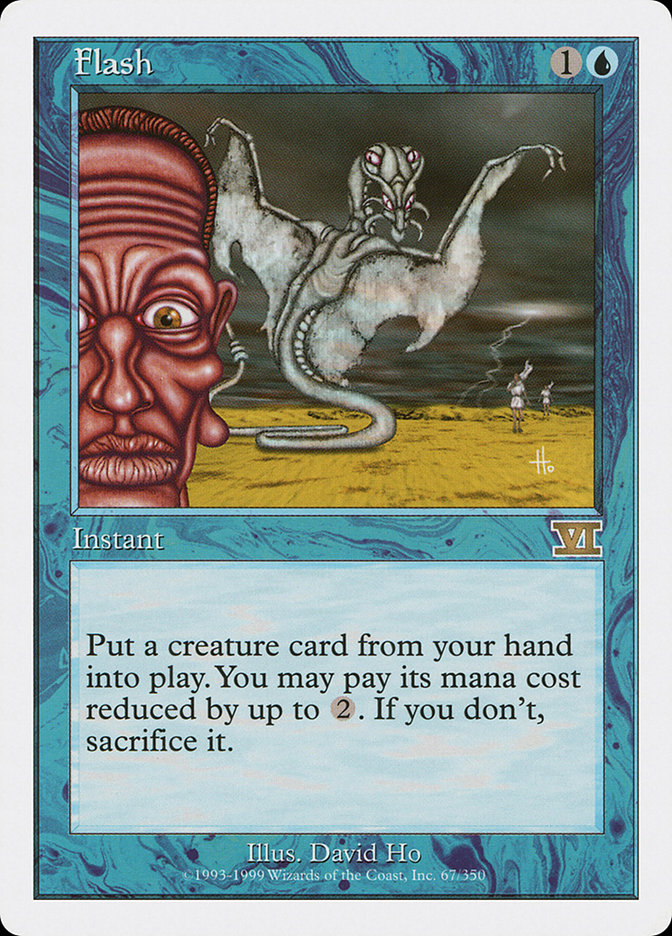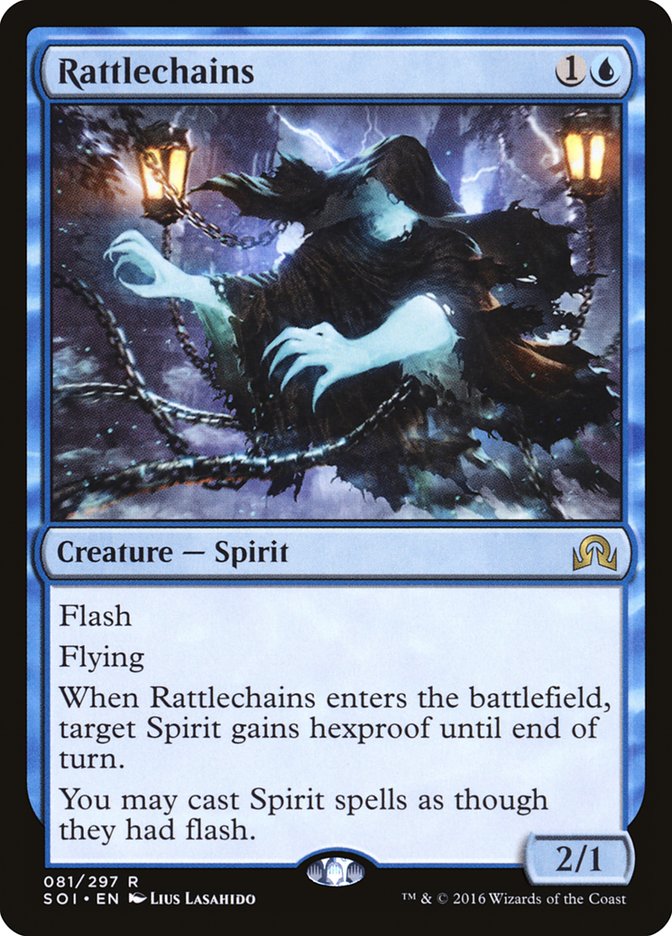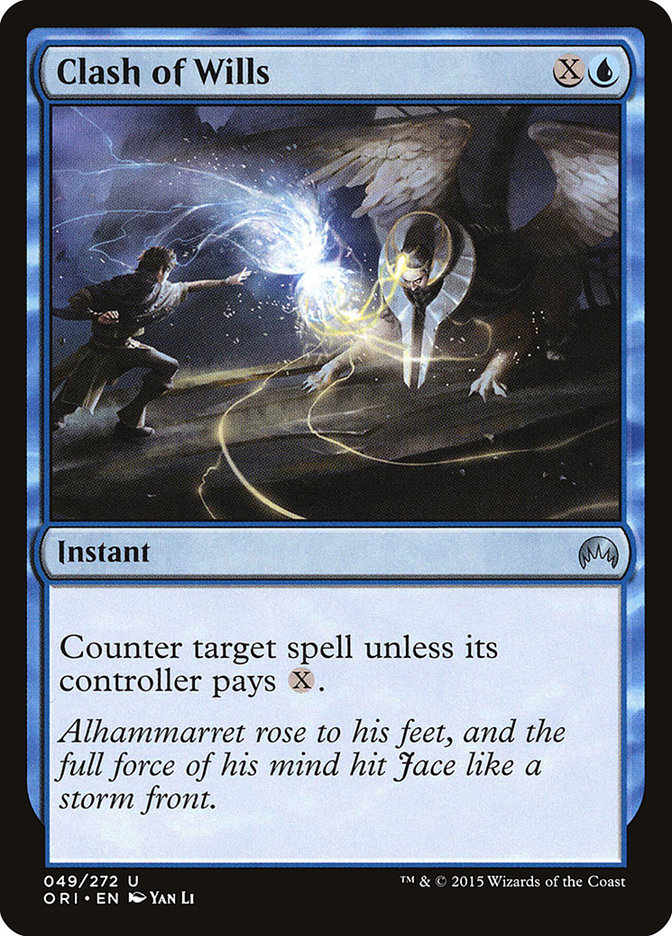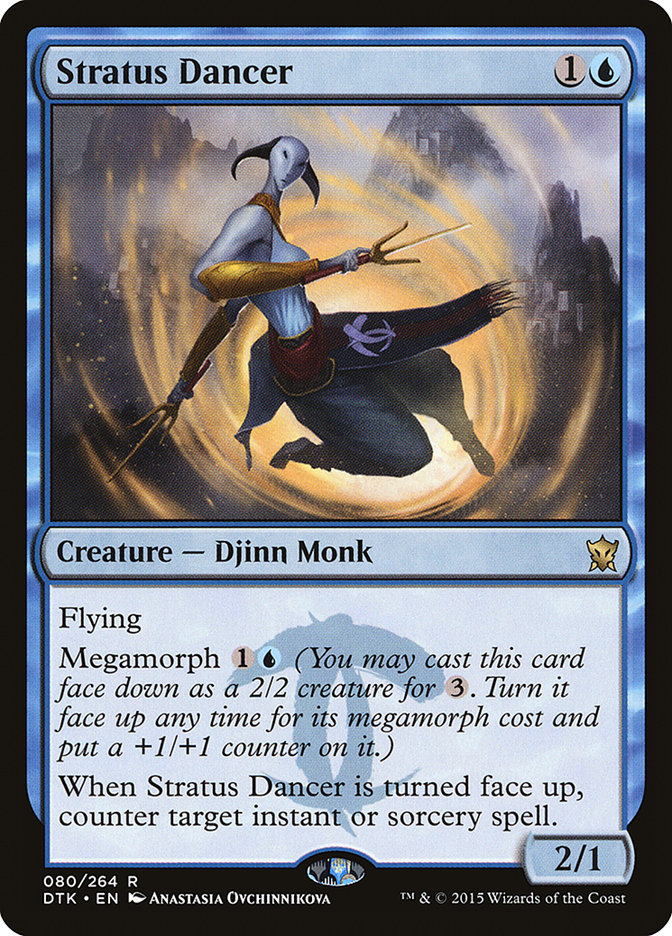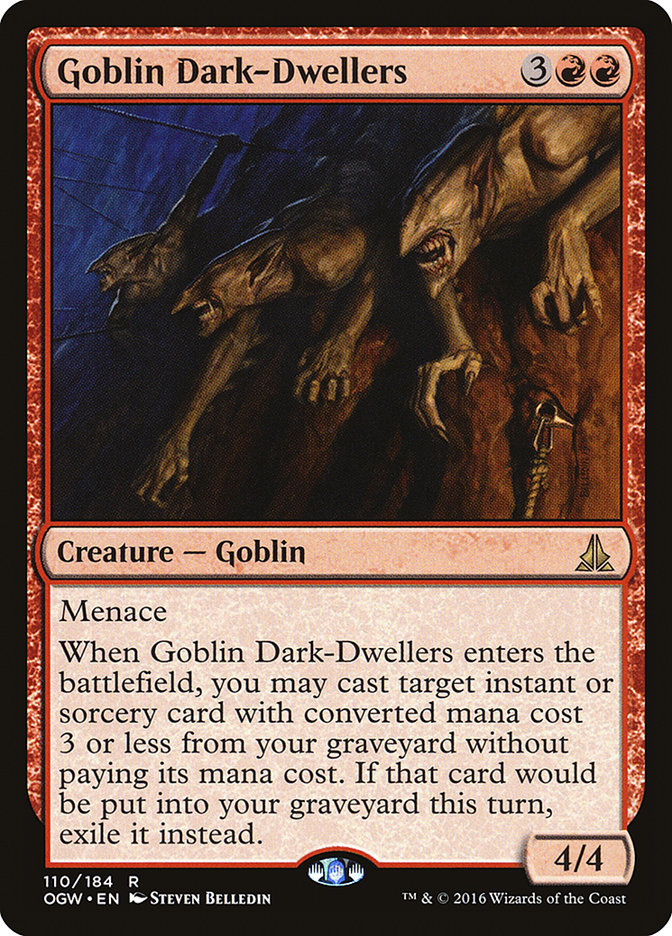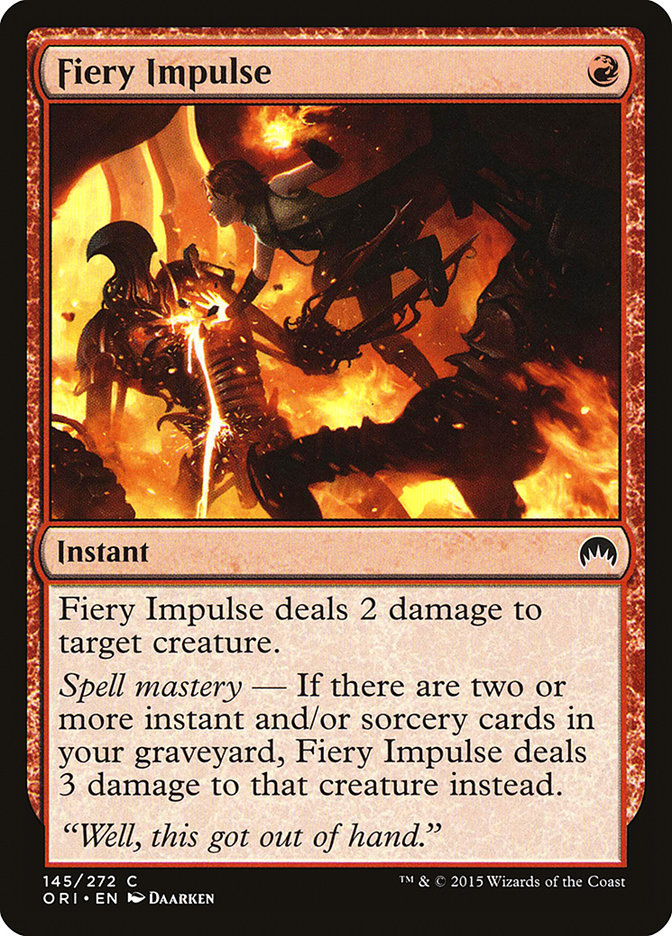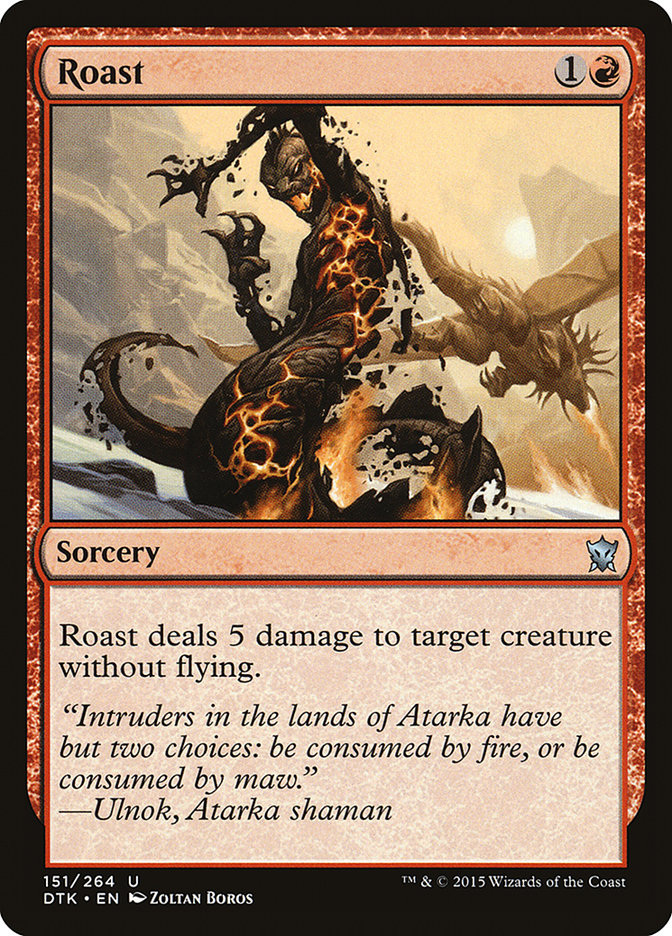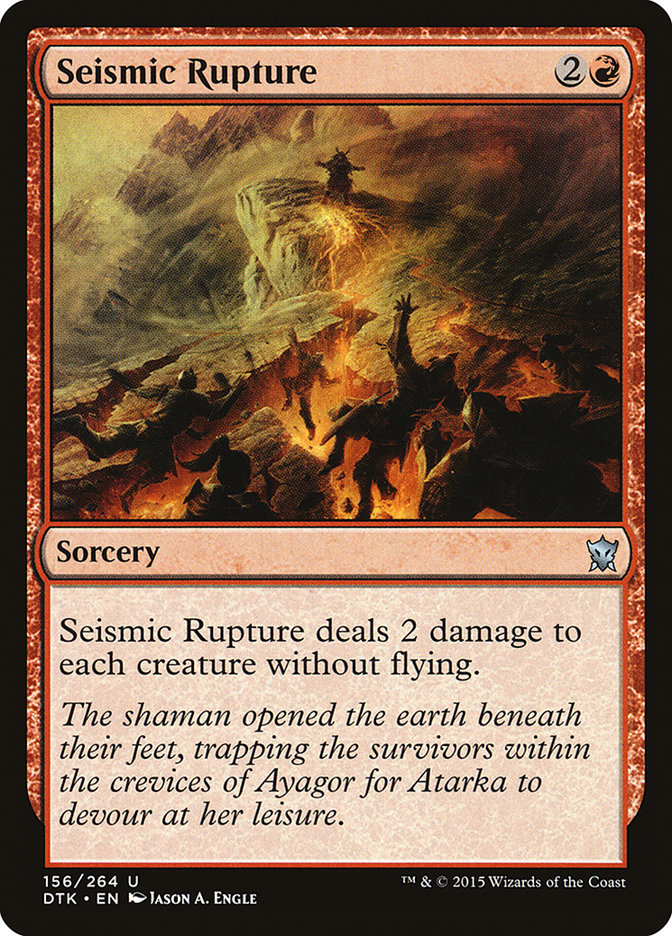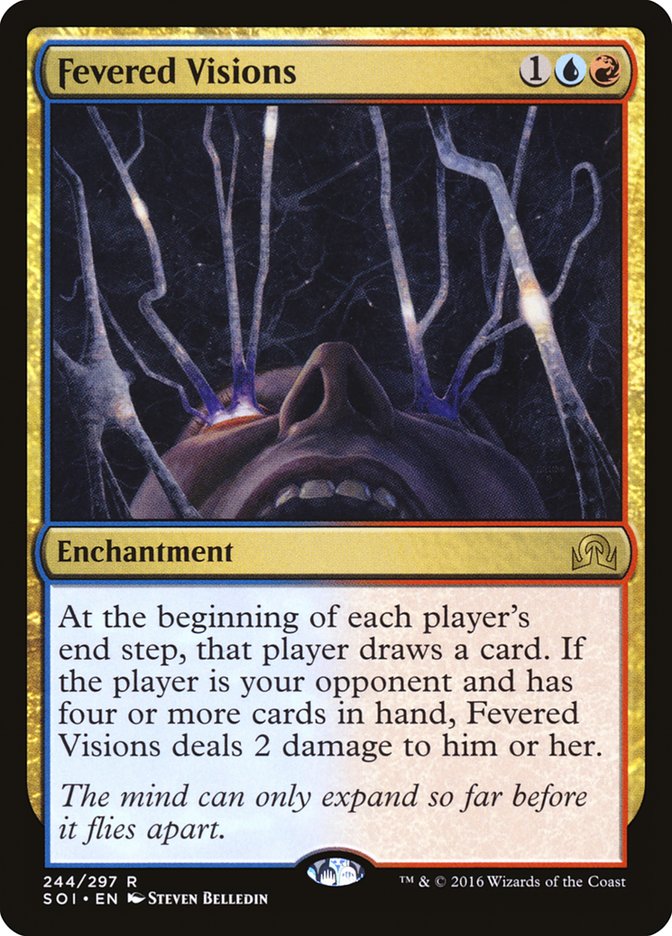 Daily Digest piece on the archetype, played by Tomoharu Saito at Grand Prix Minneapolis, but I felt the need to go a little deeper. The archetype is not one that has been explored much since the release of Shadows over Innistrad but is one I’ve had my eye on for some time. Let’s take a look at the deck before we go too much further.
Daily Digest piece on the archetype, played by Tomoharu Saito at Grand Prix Minneapolis, but I felt the need to go a little deeper. The archetype is not one that has been explored much since the release of Shadows over Innistrad but is one I’ve had my eye on for some time. Let’s take a look at the deck before we go too much further.
Creatures (16)
Lands (24)
Spells (20)
Sideboard

There are a lot of moving parts here, but for the most part this is just a Flash deck. For those of you who are familiar with the term “Flash” as a deck archetype, you should already know the basics. For those who don’t, “Flash” just refers to playing at instant speed (creatures and other spells), so that most of the decisions made in the game are on your opponent’s turn.
While only eight of your creatures have the flash ability, it is important to note that many of your early turns are going to revolve around reacting to their spells. This is a big deal because it gives you power over how the early turns play out. Cheap counterspells help you leverage the power of the flash mechanic, since you can still deploy threats if they don’t cast anything, but you also have the ability to ignore what they do in the early turns to help set up your turning point.
Now, when I say turning point, I am referring to the crux of the game where things shift in your favor, often in dramatic fashion. U/R based decks are well-known for doing this, since they are often using their life total as a way to gain a foothold on the battlefield. You’re fine taking a few points of damage if that means you’re going to eventually turn the tide.
With cards like Dimensional Infiltrator and Rattlechains, you’re not going to be doing much trading in combat, so your plan should be to pressure the opponent while finding some way to preserve your life total. Whether that means killing creatures or countering big spells is entirely up to your opponent.
While Spell Shrivel and Clash of Wills look pretty pathetic on paper and don’t usually play too well in games, such counterspells will be much better when you’re actually putting pressure on your opponent. Much like Spell Pierce or Daze in older formats, “soft” counterspells are often used in conjunction with cheap, evasive creatures. Once you’ve established a battlefield presence with one of your cheap fliers, any sort of counterspell that slows the opponent down is going to be a big deal. And if you’re the one with initiative, it will force your opponent’s hand and they will have no choice but to walk their big spells into your counter.
And with most of Standard being about using your mana efficiently, since the format hasn’t provided us with an efficient counterspell like Mana Leak, most decks are not built with counterspells in mind. In any midrange mirror, the person who is able to use the most mana per turn will often be at a distinct advantage, and so decks are built to curve out naturally. If you are able to disrupt that, their plans start to fall apart like a house of cards.
Spell Shrivel has impressed me more in the last few weeks than any counterspell in a long time, and I expect that trend to continue. I wouldn’t go putting Spell Shrivel into any deck. After all, it isn’t great if the game goes too long, which can happen if you’re playing a dedicated control deck. But if you’re playing a deck like Saito’s, then drawing a Spell Shrivel at the right time in the early turns can be invaluable.
The Creatures
Let’s start with the biggest baddie in the deck, Goldnight Castigator. While it can be a dangerous threat to deploy, it does hit incredibly hard and has haste to boot. It is also fairly difficult to kill, essentially having five toughness in terms of damage while also dodging removal like Languish and Grasp of Darkness. The downside is that it isn’t great at playing defense, since giving your opponent’s creatures double damage is a hefty drawback. It does block most creatures in Standard and survive, though.
The main draw of Goldnight Castigator is that it is a huge swingy creature to cast after you use Spell Shrivel or Clash of Wills on the third turn, leaving the battlefield mostly empty and you attacking with a giant flier. And since it has haste, there is a lot of value to holding Goldnight Castigator until the perfect turn to deploy it. You don’t always have to cast it at the first moment you hit four mana, instead opting to use it like a virtual burn spell. Four damage is a lot in Standard, and flying is a very big deal.
The fact that Goldnight Castigator can kill both Nissa, Voice of Zendikar and Gideon, Ally of Zendikar the turn you cast it makes it a clean way to answer some of the format’s most annoying threats. While the creatures left behind could become a bit too much to handle, the fact that you can knock out one of their best cards while still presenting a big threat is sitting somewhere in the sweet spot for Standard.
These two small creatures are what make the deck tick. While neither is particularly powerful alone, the damage really starts to add up quickly. And when much of your deck functions at instant speed, having these two creatures be the early threats in your deck is huge. Flying is also an important ability to have at the moment. Many decks are adept at deploying swarms of creatures onto the battlefield, making it almost impossible to pressure life totals or planeswalkers from the ground.
Once you see the deck in action, these two creatures being the primary threats in the deck starts to make a lot of sense. If your opponent decides to “play around” your Spell Shrivel or Clash of Wills, you have the option to deploy one of your eight two-mana fliers, allowing you to use your mana while your opponent fails to use theirs. And if you don’t end up wanting to counter a less-powerful spell, you can still just cast one of these creatures instead.
This deck doesn’t have a lot to do with five mana aside from activating a Wandering Fumarole, so Stratus Dancer actually makes a lot of sense. On five mana, you can morph a Stratus Dancer while still holding up removal, Clash of Wills, or even another two-mana flash creature. The existence of Stratus Dancer gives you redundancy in the early turns of the game as well, since you can opt to deploy it early, effectively giving you twelve two-power creatures with flying for just two mana. While it is a bit weaker in the early turns since you can’t hold up a counterspell, it still fits the bill more often than not.
While Stratus Dancer hasn’t seen a ton of play since the release of Shadows over Innistrad, I think more and more decks are starting to realize that flying is more important now than it has been in a long time. Over the next few weeks, I expect to be seeing more decks leaning toward flying creatures since the ground gets gridlocked so often.
While Goblin Dark-Dwellers is a sideboard card, I think it is important to highlight why it is even in the sideboard to begin with. First of all, counterspells are pretty mediocre against aggressive decks, which generally implies that you’ll be cutting most of them against any sort of Humans strategy. When that’s the case, you have four copies of Goblin Dark-Dwellers to sideboard in along with seven removal spells.
This deck is reliant on synergy, but you need a backup plan when that plan isn’t good enough. Goblin Dark-Dwellers is exactly that plan, giving you virtual card advantage and a pretty big tempo swing to boot. While it is a bit clunky and expensive, your early removal spells should be able to slow them down long enough to get a good bit of value out of your sideboard plan.
The Removal Spells
Fiery Impulse is a pretty big deal in a deck like this, acting as a cheap way to help use all your mana each turn while also giving you ways to rein in decks that are trying to spray the battlefield. While you don’t have a ton of ways to turn on spell mastery, this Shock variant is often good enough without it.
We haven’t seen this big burn spell outside of dedicated red decks in Standard just yet, but I think it is past due to make a splash. Like Goldnight Castigator, it hits hard while also giving you ways to interact with resolved planeswalkers like Nissa, Voice of Zendikar or Gideon, Ally of Zendikar. Four damage is a ton, and the fact that spell mastery can make it uncounterable is important when facing off against various control decks. Being able to deal the last few points is crucial in those matchups.
While Exquisite Firecraft won’t be winning any awards for being the most efficient form of removal in Standard, it is a hammer in a world where we don’t have time for precision. At times, you will wish you could play more than four copies.
While Roast is a sideboard option in combination with Goblin Dark-Dwellers, it does give the deck the ability to deal with creatures that might be a little too big for stuff like Fiery Impulse. The fact that it costs two mana is nice when you factor in the times where you’ll want to cast a removal spell on the fourth turn while also playing another threat (or holding up a counter). It isn’t as fancy as the rest of the deck, but I tend to lean toward sideboards that give me efficient answers to threats my maindeck might have trouble dealing with.
This one is just pure genius. It doesn’t deal damage to fliers! Normally we would consider that a drawback, but just look at Rough // Tumble in the Legacy Temur Delver decks and you’ll understand exactly why this card is exactly what this deck needs. A sweeper that doesn’t affect our early threats is huge!
While Kozilek’s Return being an instant could help defend against stuff like Collected Company, I think it is a much bigger deal that we are able to keep our creatures alive. After all, we’re technically an aggressive deck, though it may not look like it on the surface. Making sure we can slow down the opponent while still clocking them is about as much as we can ask for in a sweeper.
The Counters
I’ve already talked about this card and Spell Shrivel a bit, but understand that Clash of Wills is the reason this deck exists. Without the ability to counter a spell with just two mana available, the rest of the shell would fall apart. On the second turn, the option of Rattlechains / Dimensional Infiltrator or Clash of Wills means making the “right” decision is virtually impossible for your opponent.
While it isn’t exactly the best counterspell we could ask for, it is the one we have. And we will do our best to put it to good use. Syncopate saw a lot of play, and I can’t imagine that the exile effect on Syncopate was too important, and it certainly wouldn’t be a huge deal at the moment (outside of something like World Breaker). Clash of Wills has finally found a good home.
As I’ve already said, I expect Spell Shrivel will continue to see Standard play as long as people are willing to pair it with a bit of pressure. You don’t need flash creatures to make it good. All you need is for your opponent to be under the gun and forced to cast their spells. This deck does a great job of doing just that.
But since Spell Shrivel isn’t restricted on what type of card it can counter, like Negate, you have the freedom to use it against planeswalkers and creatures alike without the drawback of costing two blue mana. That is the main draw of Spell Shrivel for me. Void Shatter and other Cancel clones are much harder to cast in a dedicated two-color deck, and since we’re trying to cast Exquisite Firecraft and Goldnight Castigator, taking a bit of pressure off your manabase is nice. The three-mana cost is also the sweet spot for this deck, as that is right around the time your opponent is going to start plopping down their bigger threats.
Tried and true. A sideboard card for the ages. There will always be control decks and people willing to play them. Four Negate might seem like a lot with all the counterspells currently in the maindeck, but it is hard to argue with something so efficiently costed. And since our maindeck has four dead cards against control in Fiery Impulse, the sideboarding plan is quite easy.
In fact, I’ve never seen a more cookie-cutter deck as far as sideboarding is concerned.
The Outlier
You don’t have to try very hard to get me to play this card. In U/R Goggles, it was one of my favorite sideboard plans of all time. Unfortunately, I think the metagame is currently in a place where your opponent will be able to put those extra cards to great use. The Top 8 of Grand Prix Minneapolis is proof of that.
However, Fevered Visions does play an important role in the deck: dealing two to six points of damage. If you’re able to get just four points of damage out of the card, it could be the difference in winning or losing the game. And in some matchups, like W/B Control/Midrange, it could be the card that kills them outright. I know that I used Fevered Visions to kill many a midrange opponent in U/R Goggles, though I had access to more burn spells than we have access to in this deck.
I understand why Fevered Visions is in the deck, but I’m unsure this particular strategy is able to leverage those extra cards better than the opponent, which is the main draw of the card in the first place. I was always wary of playing Fevered Visions in the maindeck of U/R Goggles for fear of getting swarmed by aggressive decks. Giving them additional resources was how I lost, but then again, I did give those decks a bit more time than this U/R Flash deck.
It is possible that I’m completely wrong here, but I think that Fevered Visions is a strong sideboard card for this deck and not exactly something I want in the main. But with the current setup, it would require an entire overhaul of the deck to figure out how to fit it. And I’m not even sure what I would replace it with in the maindeck, so there’s that…
Potential Changes to U/R Flash
First off, I want to say that the decklist looks beauuuutiful on paper. It’s clean and crisp with as many four-ofs as you can fit. Saito definitely wasn’t messing around. Now that we have that out of the way, I also wanted to say that this approach to building decks, especially in Standard, is rarely correct. I’m not saying building the deck in this manner is wrong, but only that I doubt anyone has explored the archetype enough to determine that the numbers are right.
Initial builds of brews tend to be a bit heavy on some aspects and light on others. Some cards might seem great in multiples, but in practice they rot in your hand. Diversifying your removal spells gives you a much better chance at having the right answer at the right time, while also putting yourself in a position where you have a less efficient answer than you need.
Deckbuilding is always about give and take. Every card you add or remove needs a good reason, and only playing games with the deck will validate those reasons. That is one of the many reasons why “brews” are often very bad at first, even if they ultimately lead to something great. And because brews tend to lose early in development, they are often discarded before they can reach full bloom. Fortunately for us, Saito’s first foray into U/R Flash was marginally successful, snagging a 12-3 record at Grand Prix Minneapolis.
So what do we change?
I haven’t the slightest idea, to be completely honest. I mostly wrote this article to spotlight a great deck from a great mind of the game, hoping to give it a bit more press. This deck will only become great if enough minds get their hands on it. Once that happens, the hive mind that is the Magic community will be able to whip it into shape. For now, I’ll let it stand. Once I’ve got about twenty or so matches under my belt, I’ll reevaluate.
Most people see a deck, and the first thing they do is change a few cards, even before playing a single match. After all, how could this person think that playing four copies of Ulamog, the Ceaseless Hunger was correct? In actuality, most successful decks have gone through the wringer, and the pilot has good reasoning behind the card selection. If you haven’t played a game with the deck, how could you know why the deck played four copies of something instead of three? How could you know the right number of removal spells to play?
We take a lot of ideas for granted, and I’m not going to take this one from Saito lightly. The deck looks great on paper, and he did well enough that a lot of his ideas had to be good enough. Check back next week for a full primer on the archetype, along with changes and sideboarding guide.

